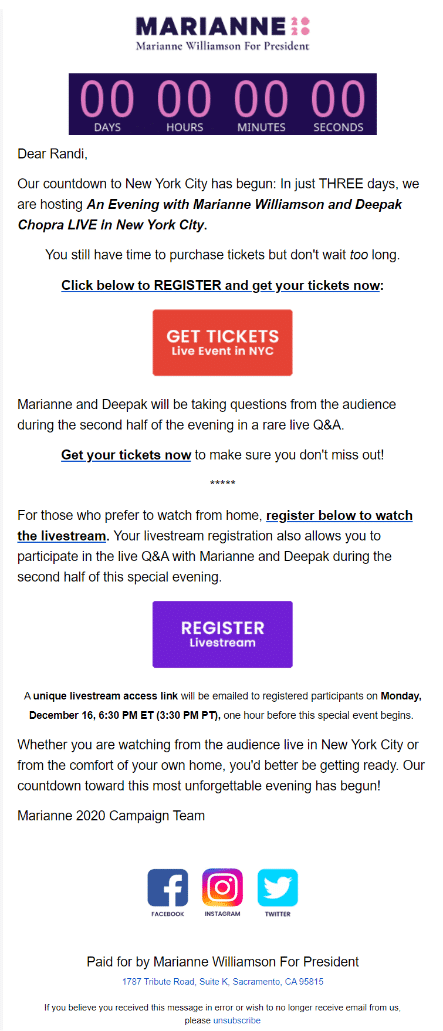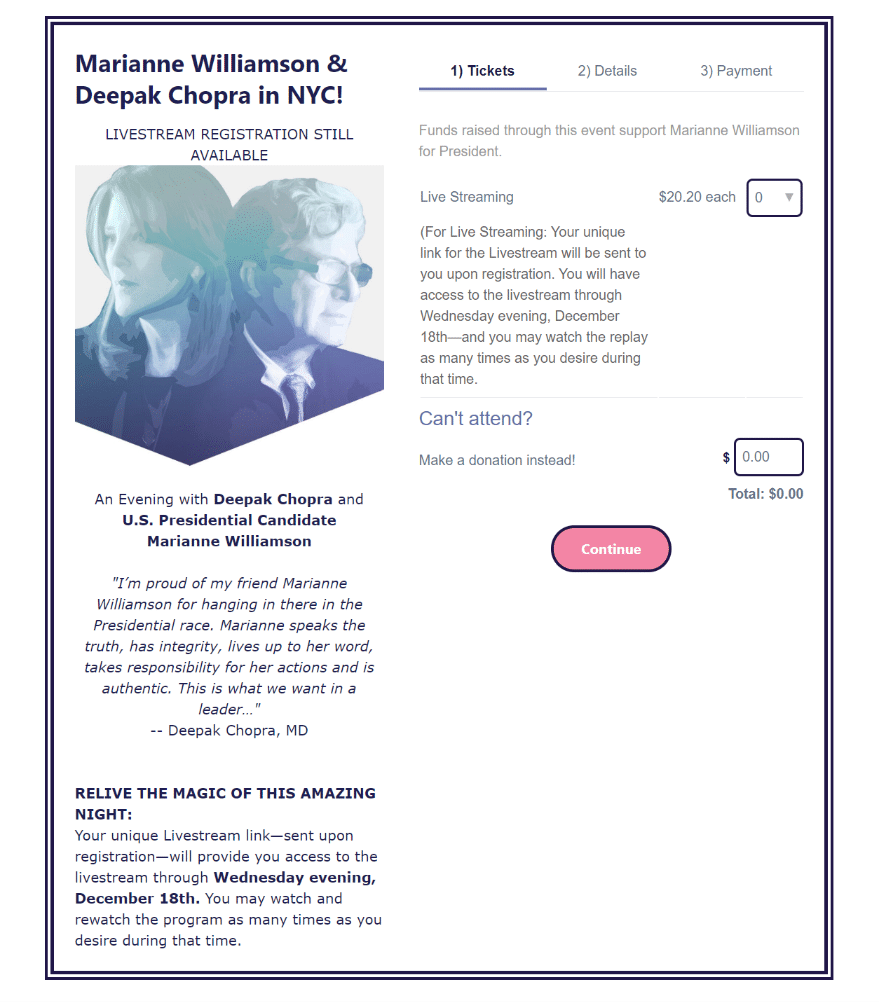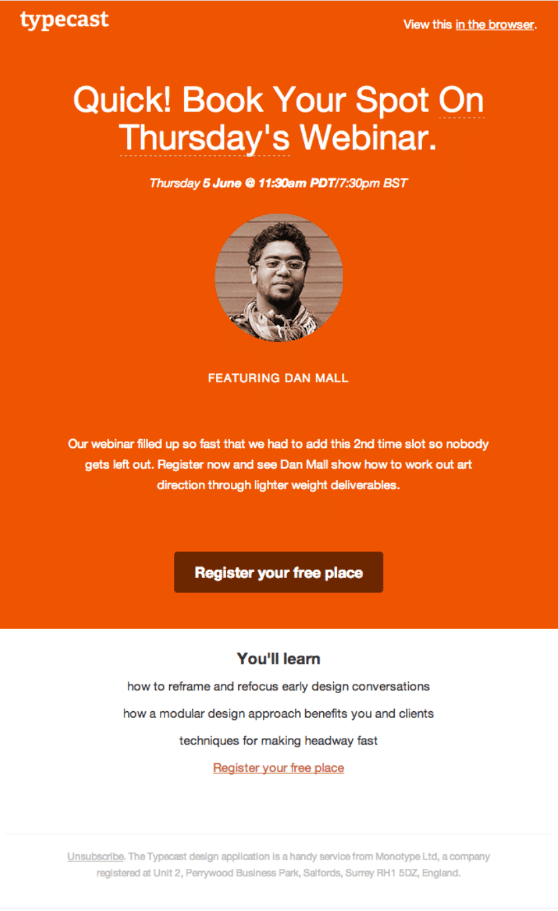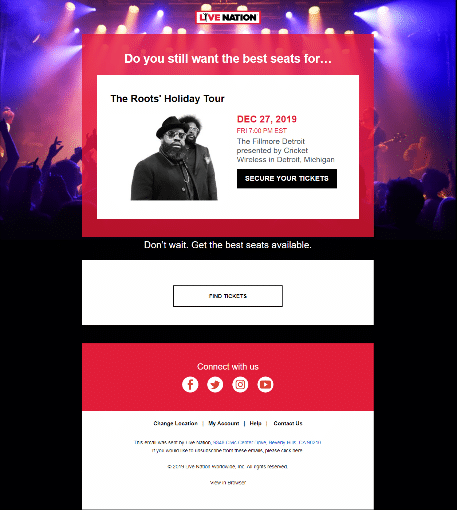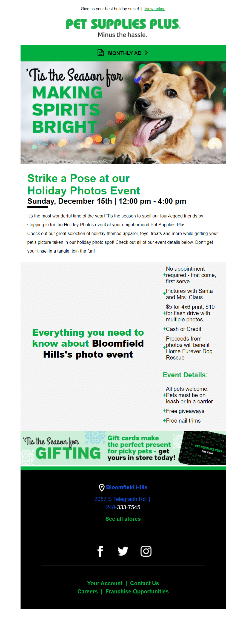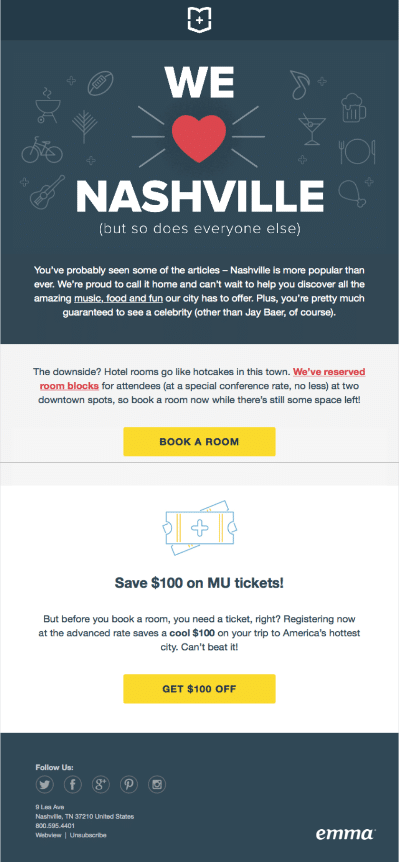10 Expert pre-event email templates that stand out
What makes people open an event email? What makes them ask, “How do I get tickets before they sell out?”
Unless you’re promoting a reunion tour of a wildly popular band, you’ll want to carefully assess your pre-event email templates.
The marketing material you create has the potential to make or break how people perceive your event and who shows up (or whether people show up at all).
No pressure, right?
In this post, we’ll go over best practices for creating your event email campaigns along with awesome examples of brands that got it right.
Why use email to promote your event?
Email is one of the best marketing tools for promoting your event because it’s great for analytics – which really come in handy. Plus, Emma integrates with Eventbrite so you can effortlessly track your marketing results.
With email, it’s easy to track clicks, conversions, and gain a deeper understanding of your audience.
Email also lets you personalize your marketing in a way that other channels don’t. According to 74% of marketers, personalization improves engagement rates. Meanwhile, personalized calls-to-action (CTAs) deliver 202% higher conversion rates.
Finally, email marketing integrates well with social media so you can create a seamless event marketing campaign across multiple channels. Using email data, you can track who registered at your event (and who didn’t) and retarget them on Facebook or LinkedIn with relevant content.
10 pre-event email templates and best practices to get noticed in a crowded inbox
How can you use email marketing to its full advantage for your event promotion?
Well, there isn’t one hack. Start by doing research to understand who you want to reach, what type of content they’ll like, and what they respond to.
Consider these pre-event email templates and best practices to grab their attention and get them hyped.
1. Create an automated sequence
Modern email service providers like Emma make it easy to design stunning campaigns in advance. From there, you can time emails to go out in the weeks or months leading up to the event.
Although you can create your own ideas based on your event’s topic, we have a few must-haves for you.
The announcement
If you’re starting with an existing list from your institution or brand, you can create an announcement email to let subscribers know about your event.
Make sure not to go overboard with your copy. Instead, use this email as an opportunity to start building anticipation.
Include CTAs with relevant landing pages to learn more and buy tickets. Campaign Monitor found that in some cases, giving subscribers multiple choices is the best route to take.
The guest introduction
You’ll also want to send an email highlighting the featured guests of your event.
Consider structuring this email more like a newsletter. Give each guest their own section – complete with a photo, a brief description, and a landing page link.
Project on Middle East Democracy (POMED) always does a thorough job of highlighting their speakers.
Source: Gmail
The schedule
Help subscribers visualize themselves at the event. Lay the schedule out day by day (or segment by segment).
Make sure to set up some code through Eventbrite so your email campaign can automatically add the event to the attendee’s calendar app.
The take-action
Some subscribers may want to take part in your event beyond simply attending.
Design emails to target these groups with opportunities for sponsorships, volunteering, booth applications, paid work, or other relevant activities.
2. Segment your list and resend campaigns
Segmentation is key to making sure your message gets out to subscribers.
After you send your announcement campaign, break your list up into groups based on who opened and didn’t open the campaign.
From there, you can decide who gets resends and who gets the next email in your sequence. You can also segment your list by different demographics and personalize each campaign.
The Marianne Williamson campaign sent this email to subscribers who hadn’t yet registered for her event. The email also included a live countdown timer.
Source: Gmail
3. Set up your relevant landing pages
The usability experts at Nielsen Norman Group say that people are more likely to complete a purchase when you reduce the number of clicks or actions it takes.
With events, you can’t ditch registration requirements entirely, so make sure you only ask for necessary information.
Set up dedicated landing pages for your event emails that load at lightning speed and let subscribers complete a seamless transaction.
Here’s what the Marianne Williamson campaign’s landing page looks like. Note how dynamic it is – the checkout option changed to livestream only after the date passed.
Source: Gmail
4. Get personal with your subject line
Before you can talk subscribers into attending, you need to convince them to open your email.
Subscribers are 26% more likely to open an email with a personalized subject line. A/B test things like: “You’re invited, James” or, “Can you join us in Detroit?”
5. Use language and features to create urgency and exclusivity
For pre-event email templates, urgency, exclusivity, and a tone of excitement work best.
Live countdown timers work great for building urgency. You can use them for early bird tickets and the event itself.
Typecast got straight to the point with concise copy that does a fantastic job of building urgency and exclusivity.
Source: Really Good Emails
6. Decide on a specific color scheme
It’s worthwhile to create dedicated branding for your event. A specific logo, or consistent colorway, is important for building familiarity and trust – which can entice skeptical subscribers.
Consider basic color psychology here. Red and yellow can help create urgency while purple can stimulate creativity.
Live Nation used reds, blues, purples, and pinks to build excitement in this highly personalized email.
Source: Gmail
7. Explain the event details right away
Keep in mind that subscribers will have a lot of questions before they feel comfortable buying tickets or registering for an event.
To boost conversions, predict any questions and answer them right away – all the whos, whats, whens, wheres, whys, and hows.
Avoid putting the burden on subscribers to remember the details, too. Include the basics in your pre-event email templates.
Pet Supplies Plus didn’t only include the basics, they even answered potential questions about how to pay, how to bring your pet, and who benefits from the proceeds.
Source: Pet Supplies Plus
8. Include helpful resources in your campaigns
Potential attendees won’t only have questions – they’ll also have concerns.
Try to anticipate any hurdles. If you can make it as seamless as possible for people to attend, they’ll be more likely to convert. Here are a few things to consider:
-
Where to stay (for people coming from out of town)
-
Transportation options
-
Directions to the venue
-
Whether or not you’ll have meals, coffee, charging stations, WiFi, or smoking areas
We know that it’s notoriously difficult to land affordable hotel rooms in Nashville, Tenn. when we hosted our event. That’s why we reserved two room blocks for conference attendees – who got to enjoy a special room rate.
Source: Really Good Emails
9. Highlight early bird prices
Did you know about 50% of event sales happen in the final week leading up to the event?
About half tend to buy tickets right away and the other half wait until the final week. That’s not ideal for marketers who want to prove to their boss that their campaigns are working.
You can help entice people to RSVP at different times leading up to the event with tiered pricing.
Make sure to send emails highlighting the price – especially to subscribers who’ve already opened your emails or clicked links.
10. Be deliberate with your CTAs
While you can include a few CTAs to give unsure subscribers opportunities to learn more about the venue, your guests, and prices, you’ll want to make sure your language is deliberate.
Nielsen Norman Group found that language like “get started” is too ambiguous to build confidence. Instead, use your CTA buttons to clearly explain exactly what’s on the other side of the link.
Phrases like “Tour the venue,” “meet the speakers,” and “reserve your spot” work much better.
Wolf and Badger used a clear “buy tickets” CTA for their Earth Day event and subscribers could click on each picture to learn more about the panelists.
Source: Milled
Wrap up
Event marketing takes a lot of planning. But once you get the basics worked out, pre-event email templates make automating the hard stuff, and reaching the right people, a breeze.
Remember to:
-
Keep copy tight and concise
-
Develop event-specific branding
-
Segment your campaigns to spread your message
-
Write deliberate CTAs
Looking to sell out your event faster than ever before? Check out this guide we created with Eventbrite to get started.
MOST RECENT ARTICLES
Want to engage your audience and grow your brand? Try Emma's robust easy-to-use product today.


